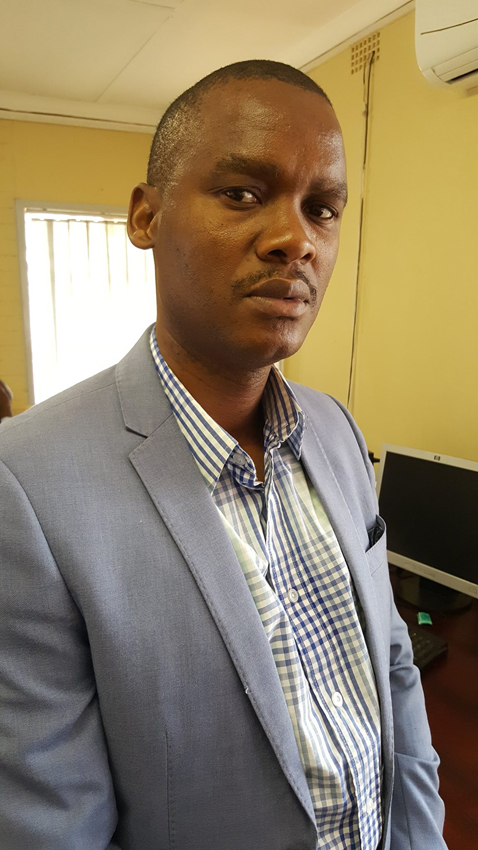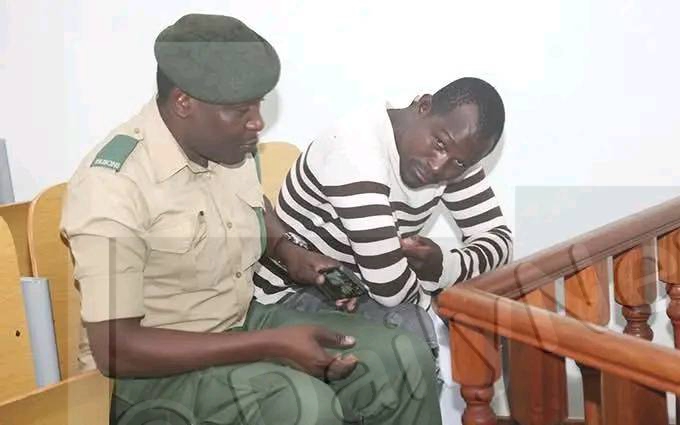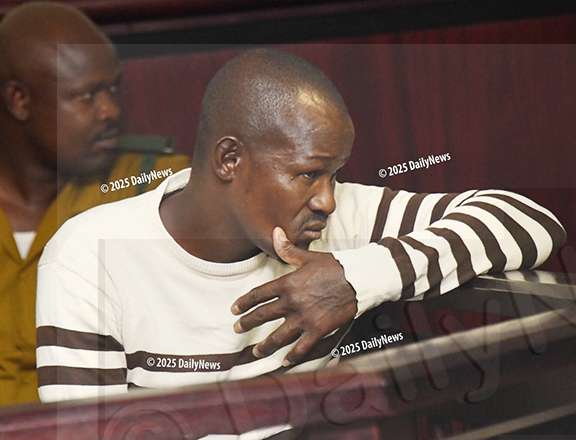Sedudu shooting Inquest Day 8
25 Nov 2021
Reporters Mooketsi Mojalemotho and Keamogetse Letsholo give a daily account of the proceedings of the enquiry into the deaths of Namibians Martin Nchindo, Ernest Nchindo, Tommy Nchindo and Zambian Sinvula Munyeme who were shot by Botswana Defence Force anti-poaching unit on November 5, 2020. The investigation ends on November 26
The case of two pathologists: The Expert and the Inexpert
Witness number 18- Dr Kaelo Pansira Mabaka -
Earlier on Day four of the investigation Dr Mabaka gave his evidence.
Earlier on Day four of the investigation Dr Mabaka gave his evidence.
A consultant forensic pathologist with Nyangabgwe Referral Hospital, he told the court that on November 13 last year, he conducted a postmortem on the bodies of the four men, which were brought in by the police.
“The bodies were in a moderate degree of decomposition and had multiple gunshot injuries, and the clothes they were wearing had multiple small defects,” The pathologist went on to give a detailed report of each of the deceased persons, describing both their internal and external injuries.
At the end of the doctor’s elaborate report on each of the four men, the DPP’s Assistant Director of Prosecutions, Ms Thato Dibeela asked Dr Mabaka, what his conclusion was about the body of Martin Nchindo.
“He died from gunshot wounds to the abdomen and the pelvis,” he said.
“Did you recover any metallic object from Martin’s body?” asked Ms Dibeela No, Dr Mabaka did not recall recovering any bullet.
The x-ray indicated fractures instead. “Although I could not tell what kind of firearm was used, looking at the injuries I could tell that a rifle and not a shotgun was used and the bullets were not shot at close range,” he elaborated.
Ms Dibeela went on and asked him what the cause of Ernest’s death was.
“The cause of death is multiple gunshot injuries to the chest and extremities and just like in Martin’s case there was no evidence of close range defects on the body,” said the doctor.
Ms Dibeela then asked if there were any pictures of the bodies taken during the post-mortem and by whom.
Dr Mabaka’s answer was that Inspector Josiah, the crime scene investigator did take pictures. Answering the question as to whether he guided the process he affirmed that was the case.
“Yes as pathologists we normally do so to ensure that they are in line with the report,” he said. Asked if he saw the pictures after they were developed, Dr Mabaka answered in the affirmative, and added that the snaps were consistent with his guidance of how they should be taken.
As for Tommy, Dr Mabaka said, a bullet fragment was recovered in his abdomen and the cause of death was a result of gunshot to the chest and the abdomen while Munyeme’s cause of death was a result of gunshot to the chest and extremities.
He explained that none of the wounds he found in the men had any soot and Ms Dibeela asked him to explain what he meant.
“It means there was nothing to indicate the deceased was shot at close range,” He said.
Ms Dibeela then asked him what he believed could have been the cause of decomposition of the bodies as he earlier had stated they were in a moderate state of decomposition.
“When someone dies they go through postmortem changes: in the first hour the body stiffens and become cold and in the subsequent hours the body starts to decompose generally in the region of 8-12hours.
The rate of decomposition is dependent on a number of factors, the predominant being the temperature and how long it took before it was refrigerated.
In this case the bodies were turning greenish maybe due to warm environment prior to being taken to the freezer,” he said.
Ms Dibeela: “Will the presence of water make any difference in the rate of decomposition.
Dr Mabaka: “The presence of water will generally hasten the process of decomposition”.
Ms Dibeela: “Will water affect the presence of soot on the bodies?”
Dr Mabaka: “Yes water could affect the presence of soot on the skin but that doesn’t generally affect the findings of powder tattooing of the bullet in the skin”. Ms Dibeela: “What could you describe as a close range shot?” Dr Mabaka: “It can be described in three categories depending on the type of gun and bullet used and generally close range will be few centimetres from the body; intermediate range will be a few metres; distant is several metres.
I mean there is no evidence of contact, close and intermediate in this case”.
A Namibian state prosecutor, Mr Bornface Konga took his turn to ask Dr Mabaka.
He asked the doctor to say in his observation, the direction he believed the shooter was standing in reference to the deceased.
The pathologist indicated that the shooter was on the left side.
“If the shooter was on the left, why is it that some of the bullet entry points were on the right?” asked the Namibian prosecutor. “Having some bullets entering at different positions maybe due to the fact that the target changed positions,” explained the pathologist.
Then came in Namibian Lives Matter’s Sinvula Mudabeti who asked if the doctor had established the time of death of the four men, to which the doctor said he relied on documentation submitted for postmortem.
However Mr Mudabeti took issue with why the doctor could not establish the time himself.
“It was not easy to do so because the bodies had been moved from the crime scene and refrigerated,” explained Dr Mabaka.
He explained that the process of refrigerating the bodies interferes with decomposition and the process by which pathologists determine time of death.
No more questions followed after that.
Witness number 33 - Dr Bitoma Toto Amisi – Mooketsi Mojalemotho reports on the proceedings of The afternoon of day eight of the investigation, which saw Dr Bitoma Toto Amisi, a Medical Doctor at Namibia’s Katima-Mulilo State Hospital take to the witness stand.
He was part of the team that had observed the post-mortem procedure on the men.
Dr Amisi’s report of the post-mortem, which he had previously shared with his superiors back home, and was now presenting it in court, was fortified with expressions of condolences to the bereaved family, the people of Zambezi region and the entire population of Namibia.
Ms Dibeela took exception to the manner the report was written, saying it was a departure from professional ethos.
Dr Amisi admitted that indeed, “that part of the report was not important for the Magistrate.” Ms Dibeela dug in: Dr Amisi was wrong to show his emotions in his report.
He should have remained professional and steered clear of any language and emotional theatrics.
Another aspect of the report by the 45-year-old doctor from the Democratic Republic of Congo that Ms Dibeela did not like was the labelling of the death of the deceased as “tragic”.
“Isn’t every death tragic to every family?” asked Ms Dibeela.
No, not all deaths were tragic, he said.
Some were in fact a relief to family members, and he could attest to that as a medical doctor, he stated.
Mayor Able Motaung took the baton and wanted the doctor to explain why a doctor from the DRC and working in Namibia would have words such as “Nation was under shock” in the first sentence of a report to his superiors, and he wanted the doctor to explain if the content formed part of his official assignment to Botswana.
Dr Amisi said it was merely his style of conveying his message to his superiors and nothing else.
However, he said he had no qualms with contents of Dr Mabaka’s report, which he said constituted what he deemed a proper post-mortem report.
Another shocking revelation was that Dr Amisi who had earlier on introduced himself as a General Practitioner and Family Physician claimed to be an expert in pathology, and at par with the ostensibly more knowledgeable and qualified Dr Mabaka.
In his testimony Dr Amisi who briefly stayed in Botswana prior to finding employment in Namibia had stated that he was only introduced to pathology as part of in-service training in Namibia from March 2011 through June of the same year.
Even more shocking were revelations, upon further interrogation, that none of the people who trained him had any knowledge of or training in pathology.
One could argue that the deafening silence in court was muted shock at the revelation.
That shock would have come from further revelation that Dr Amisi, though not a pathologist, believed the area of specialisation was consistent with the type of medical training he had, which was why he had been doing post-mortems for a good 10 years!
“I don’t have the qualifications of a pathologist. I have the confidence to do the job,” he said.
The doctor appeared not to appreciate the gravity of the situation and to help him realise just how serious the matter was, Major Gabothuse likened Dr Amisi’s situation to that of someone with some knowledge about a vehicle, but who was not mechanic by qualification.
“The mere fact that you are doing the duties of a pathologist does not make you one.
You are merely a General Practitioner and Family Physician who adventured into the area of pathology, “he said, leaving the court in stiches.
Major Gabothuse also said Dr Amisi’s report lacked all the features of an official document such as the date stamp and emblem of the republic of Namibia.
So, he asked the doctor if the report should be accepted by the court the way it was, to which the doctor answered by saying the court had the power to accept or reject it.
He stuck to his guns that the report was official. The best he could do was apologise for the fact the report that did not have the official symbols but the contents of the report were credible, he argued.
In his report to his superiors Dr Amisi had stated that “swollen faces” on some of the deceased persons could have been due to assault, prior to or after their demise; something that Majors Abel Motaung and Joshua Gabothuse as well as
Assistant DPP Director Ms Dibeela challenged. Ms Dibeela put it to Dr Amisi that the hard surface of a canoe, which was made of a Monggongo tree, could cause trauma to the skull and swelling if someone fell headlong onto it, and he affirmed it was so.
Ms Dibeela’s question was as a follow up to one from Namibian prosecutor Mr Konga, who had earlier on wanted Dr Amisi to state categorically how he arrived at the conclusion that the deceased’s could have been assaulted.
The doctor had said assuming the bodies had swollen due to decomposition, that should have been consistent with all four bodies, but Ernest and Martin Nchindo’s faces appeared to have been assaulted as there was on only one part of Martin’s skull while the rest of the skull was intact.
He had argued then, that the injuries could have been as a result of a fall following assault. ENDS
Source : BOPA
Author : Keamogetse Letsholo and Mooketsi Mojalemotho
Location : KASANE
Event : Inquest
Date : 25 Nov 2021
Related News
03 Nov 2025
Letsididi trial continues next year
01 Nov 2025
Letsididi Trial set for next year
28 Oct 2025








